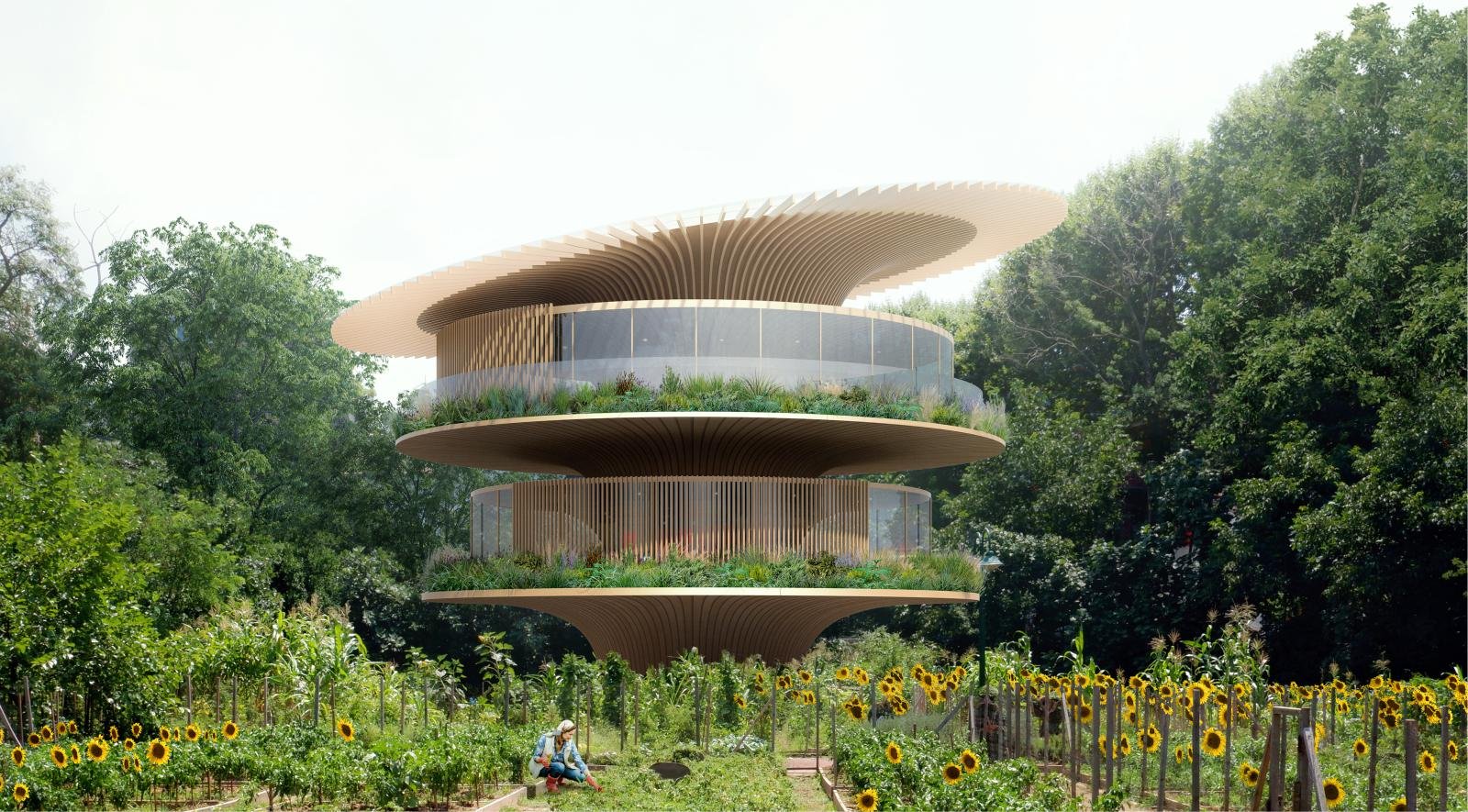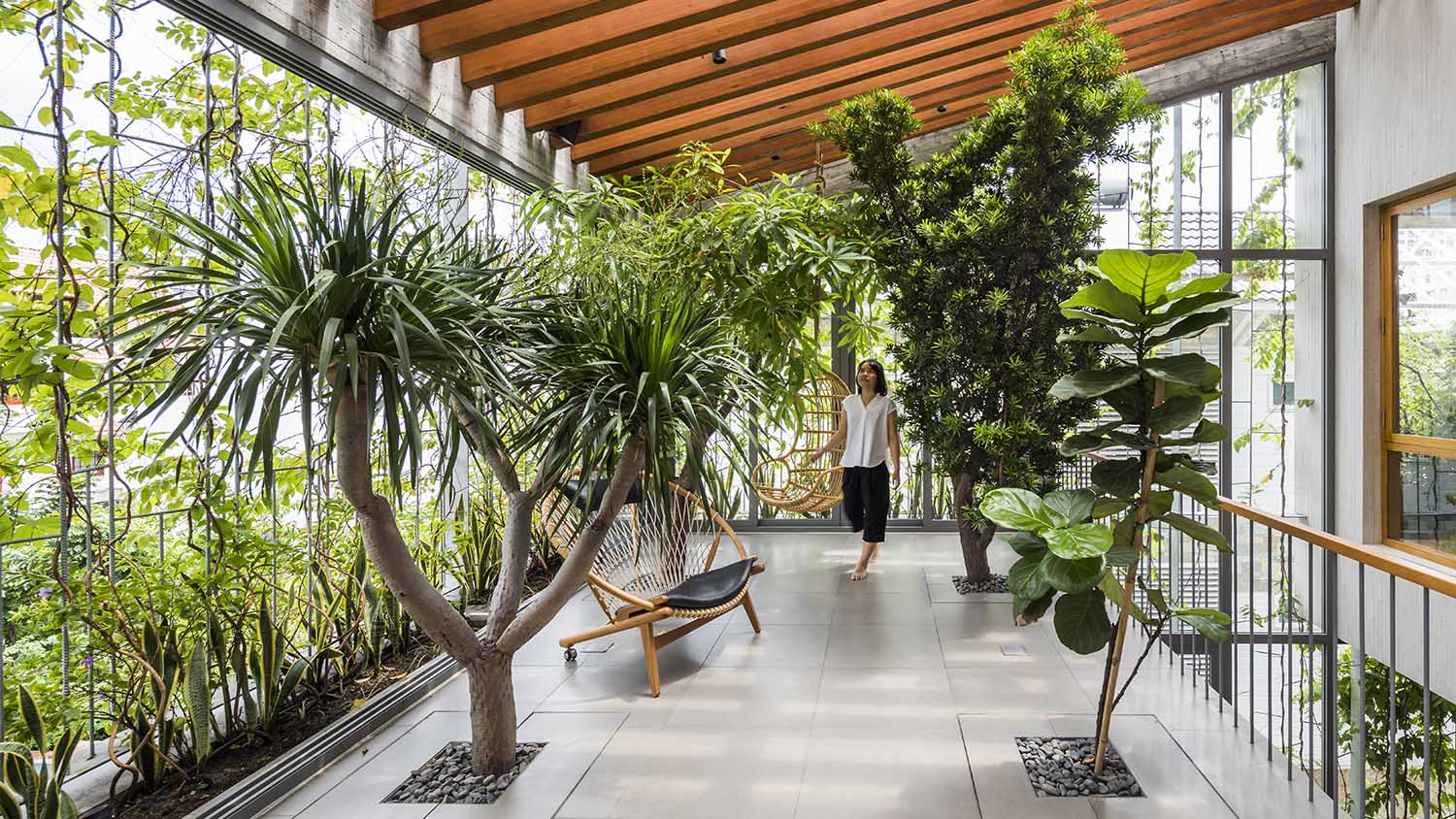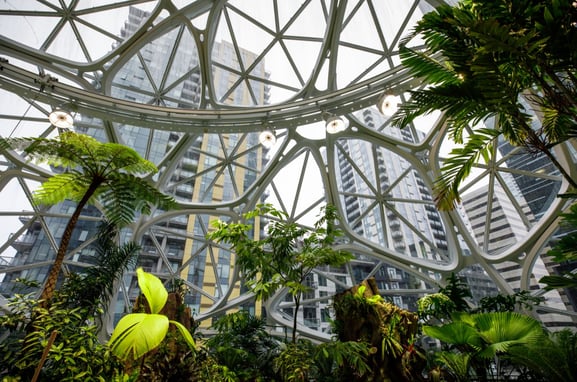Biophilic design is based on the assertion that humans have an inherent connection and desire to connect with nature. Stating that biophilia is a vital factor in human physical and mental health. From these concerns emerges "biophilic architecture", discover the importance of nature in design through the scope of social and environmental benefits. Backed by the research on nature's psychological and physiological effects on the human mind.

Before diving into why nature plays such a vital role in architecture, let us analyze current urban designs. And find out why modern architecture seems to be devoid of the natural spirit.
Mechanized Urban Architecture
As humans evolved passed the need to be in direct connection to nature, buildings have become sterile and are treated as separate from nature. Which led to the Modern Architecture Movement, where exploitation of modern technology would serve to build faster and cheaper.
The product of this movement is lazy blocky design and dull concrete urban landscapes. These traits reflect poorly across all forms of architecture but show most prominently in large structures, such as office buildings in metropolitan cities.
 Modern Architecture in Oslo, image via Piqsels.com
Modern Architecture in Oslo, image via Piqsels.com
Attributes of Biophilic Design
Biophilic design traits can be categorized into three main terms: Nature in the Space, Natural Analogues and Nature of the space. Bringing Nature Indoors, image via Hirouyki Oki
Bringing Nature Indoors, image via Hirouyki Oki
Nature in a space is the most direct approach to bringing humans closer to nature. Including the presence of plants indoors or outdoors, water flowing or dynamic natural lighting that changes in angle depending on the time of day.
Natural Analogues are a stage apart from true nature, patterns and materials that evoke a connection with nature, such as architectural forms, patterns and organic shapes. As well as material connection with nature, these traits are subtle reminders of nature and have a positive effect on humans known as the 'savannah effect'.
Lastly, Nature of the Space considers how humans respond to spatial configurations. Humans respond well to spaces in which they feel safe, which is enhanced by being allowed to assess their surroundings for hazards. Well-designed views using balconies and open floor plans are common ways to achieve this. Lower ceilings and partial concealment of space are other alternatives to creating a safe feeling surrounding.
Nature-Health Relationship
Biophilia can have boosting effects on our cognitive capabilities. During energy-intensive sessions of clearing paperwork in the office, routine solid connections to nature serve as a promising avenue for mental restoration.
Being close to nature has benefits for our psychological welfare. Empirical studies show that being in the presence of nature improves emotional restoration and aids in maintaining lower stress levels, compared to being in urban environments isolated from nature.
Park Royal Collection, image via BiophilicCities.com
Sustainability of Biophilic Design
There is a difference in approach between environmentally sustainable design and biophilic design. Sustainable design goals are driven by a quantitative emphasis on using technology to keep below certain energy consumption levels.
While biophilic design employs a more human-centric approach with qualitative solutions that benefit the environment and the users in the long run. Since it is based on improving human connectedness to nature, it bridges the void from nature in both the environment and the building occupants.
Sustainable design is a passive connotation to 'reduce' our impact on the environment. While biophilic design has a more 'productive' approach, aiming to improve overall human performance.
Hence, biophilic and sustainable design must go hand in hand, as both works towards better human-nature connectedness. Integrating both into overly mechanized city landscapes is the way to enhance the human lifestyle and conserve the precious environment.

Amazon Spheres, an ultramodern office building with lush botanical gardens in Seattle, Photo: Amazon










